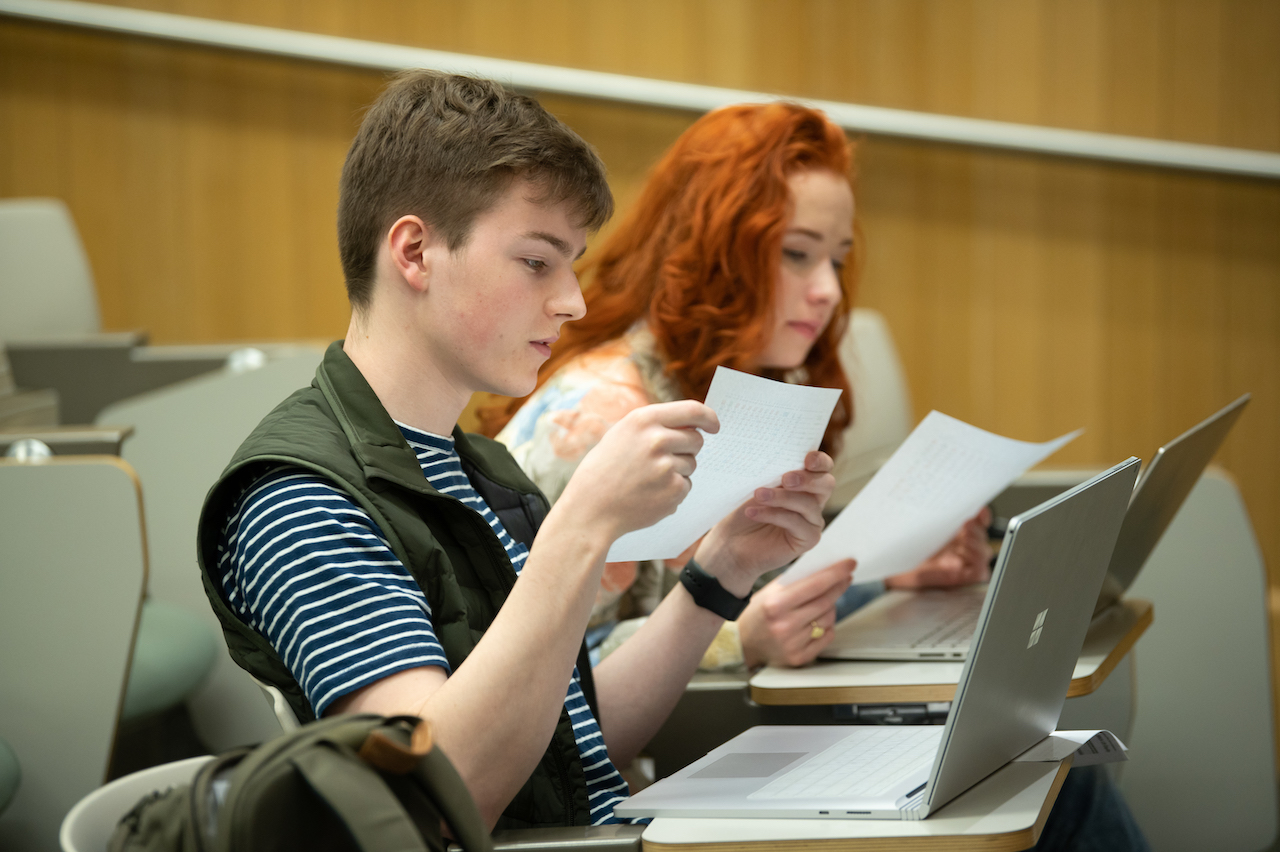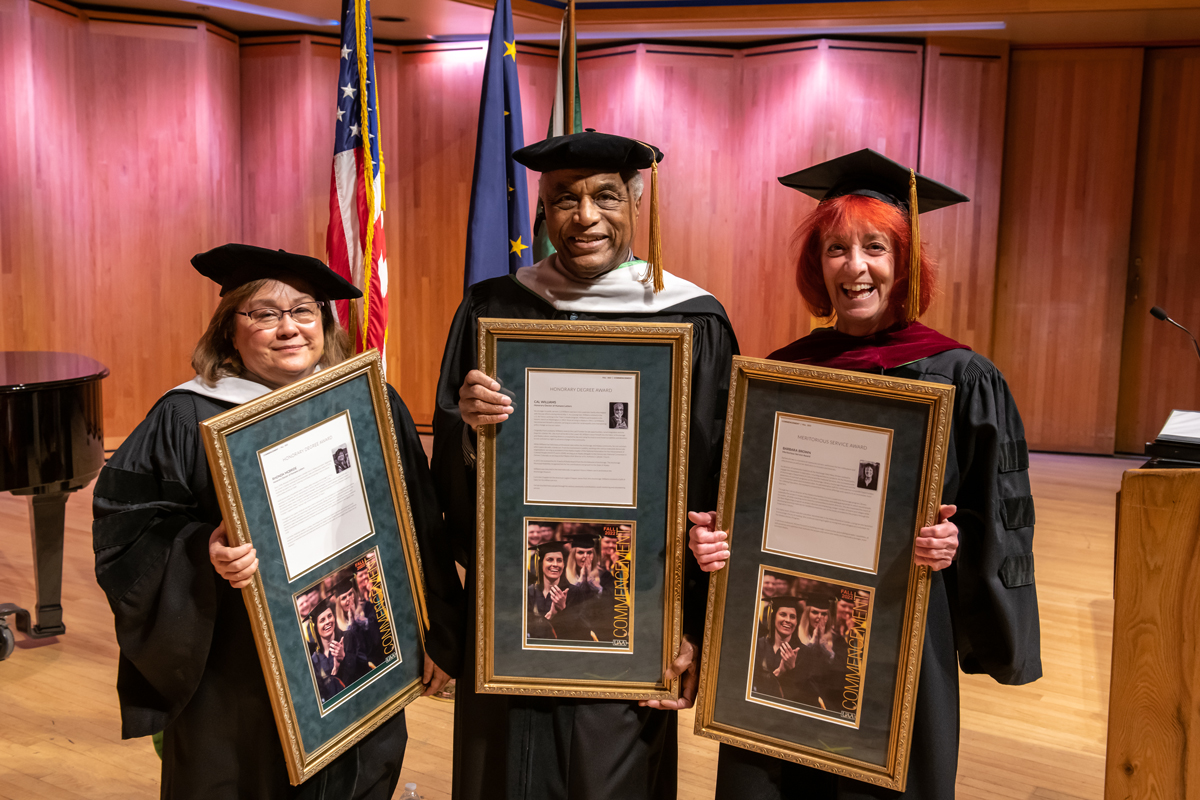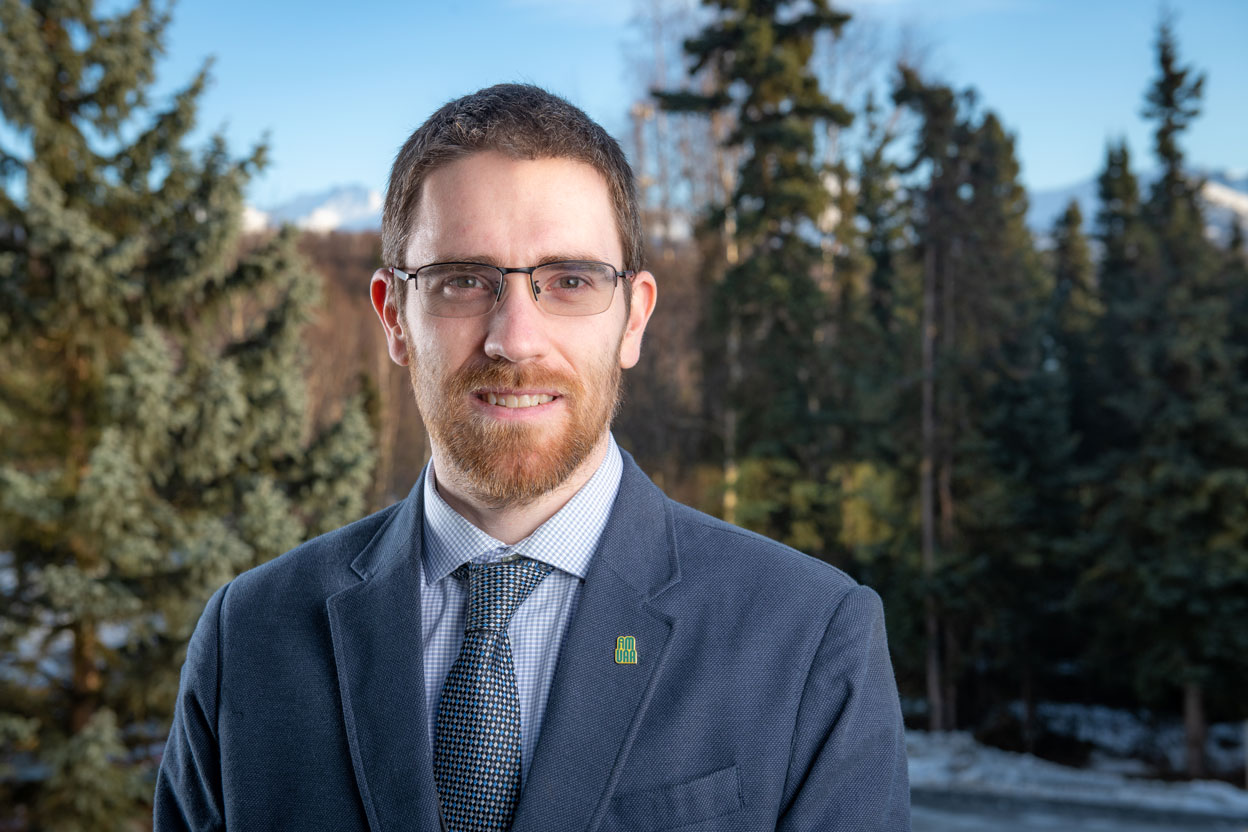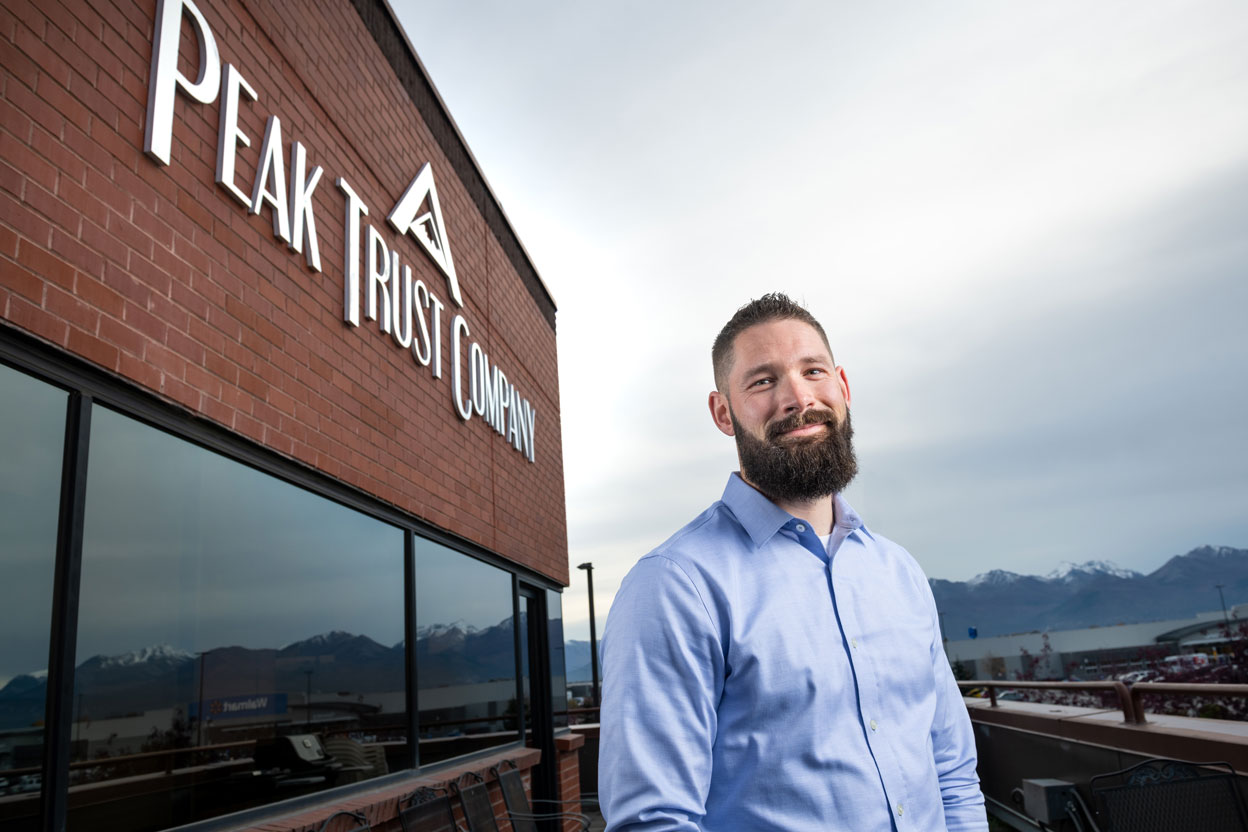Students make decisions for the new Seawolf Investment Fund
by Mariah Oxford, College of Business and Public Policy |

Ten students in Alex Slivka’s Student Managed Portfolio course this spring had important work to do. They read from a diverse array of books on finance, forecasting and risk. They followed the ups and downs of industry sectors, analyzed securities and gave multiple presentations. Finally, as a group, they made decisions that have real-world impact. They are the first students to make recommendations for the new Seawolf Investment Fund, which was created in 2021 with a $1 million gift made by UAA alumnus Gary Klopfer and his wife, Jane Cuddy Klopfer.
Only students taking upper-level finance courses at the College of Business and Public Policy get this experience, and the coursework was challenging. “When we first looked at all the books we had to read and all the writing, it seemed overwhelming,” said Robert Pype. “But I’ve gotten the most out of this class than any I’ve taken at the university.”

Other students agreed. The amount of reading, research and writing were essential to better understand their stock picks. Each student was assigned to follow a specific sector, like energy, financials, health care or utilities. Every week they predicted whether their sector would go up, stay the same or go down – and they had to explain their reasoning. “In the beginning, our predictions were a lot of guessing,” said Tayler Gongliewski. “As we’ve read more books, we can go more in-depth and explain what we think the impact of current events might be on our sectors.”
“It was really unique taking this class at a time like this with the Ukraine crisis,” said Noah Cooley. “With everyone assigned to a sector, we were able to see how each one was affected. Like energy – it was going up a lot.”
“Students learned that anything can happen in the three months while they are researching stocks,” Slivka said. “As an example, one of the stocks that got picked was Netflix, and then it went down a lot. That doesn’t mean that over the next year it won’t go up.” The short time frame is one reason grades are based on communication skills and teamwork rather than the stock picks themselves.
These skills are critical for success in almost any job, Slivka said. “Every day you need to take in information, form opinions on it, present your ideas and work together as a team toward some common goal.”
The discussion and teamwork in the Student Managed Portfolio class were essential. Pype gave an example about wanting to pitch a company he really liked. “Then, because of the questions asked by my fellow students, I took a deeper dive. I fully switched what I was pitching because I figured out some things that were red flags for me that I never would have noticed otherwise.”
Before taking the course, Gongliewski thought picking stocks was more straightforward. “Taking this class, I realized how much I don’t know about the market as a whole.”
Slivka enjoys allowing students the opportunity to understand what kind of decisions they make, how they are judged on those decisions and what kind of characteristics to look for. He has worked in financial markets for nearly four decades, including managing a trading desk, portfolio management in excess of $1 billion and fiduciary board service for entities such as the University of Alaska Foundation. He said the books he assigned for the course are transformational for understanding how investors think and make decisions. “It’s always impressive to me how students comprehend these ideas, take the information in and then explain how they bring it into their own decision making.”
Knowing they were working with real funds made a difference in the students’ approach to the class. “Doing the pitch wasn’t worth much of our grade, but I was much more willing to put a lot more time and effort into those kinds of assignments, because I wanted to do it and I was excited about it,” said Aden Haywood.
“We knew that by the end of the semester we would be making these decisions, so everyone came to class each week a little more prepared,” said Olav Sanderberg.
As a final project, students created a report detailing the stocks they recommended, each industry sector followed, and the goals they wanted to accomplish through their work. As the fund grows, it will generate scholarship money for accounting and finance students. Students also hope the Seawolf Investment Fund can compete against other undergraduate student-managed portfolios around the country. They have their eyes set on the Quinnipiac Game Forum, an annual student finance conference that culminates in an awards ceremony for the performance of university investment funds.
“As with all portfolios, there is a clear plan for the future of the Seawolf Investment Fund,” they wrote. “We see great potential for the State of Alaska going forward…Our hope is that we not only provide a solid education on portfolio management, but that we also work to retain the newly educated students for the growth of Alaska.”
It’s clear that this inaugural course made an impact on more than just the Seawolf Investment Fund itself. That’s the promise of this program. Students are more invested in the work, more interested in careers in finance, more knowledgeable about forecasting and more experienced in portfolio management.
 "Students make decisions for the new Seawolf Investment Fund" is licensed under a Creative Commons Attribution-NonCommercial 4.0 International License.
"Students make decisions for the new Seawolf Investment Fund" is licensed under a Creative Commons Attribution-NonCommercial 4.0 International License.














